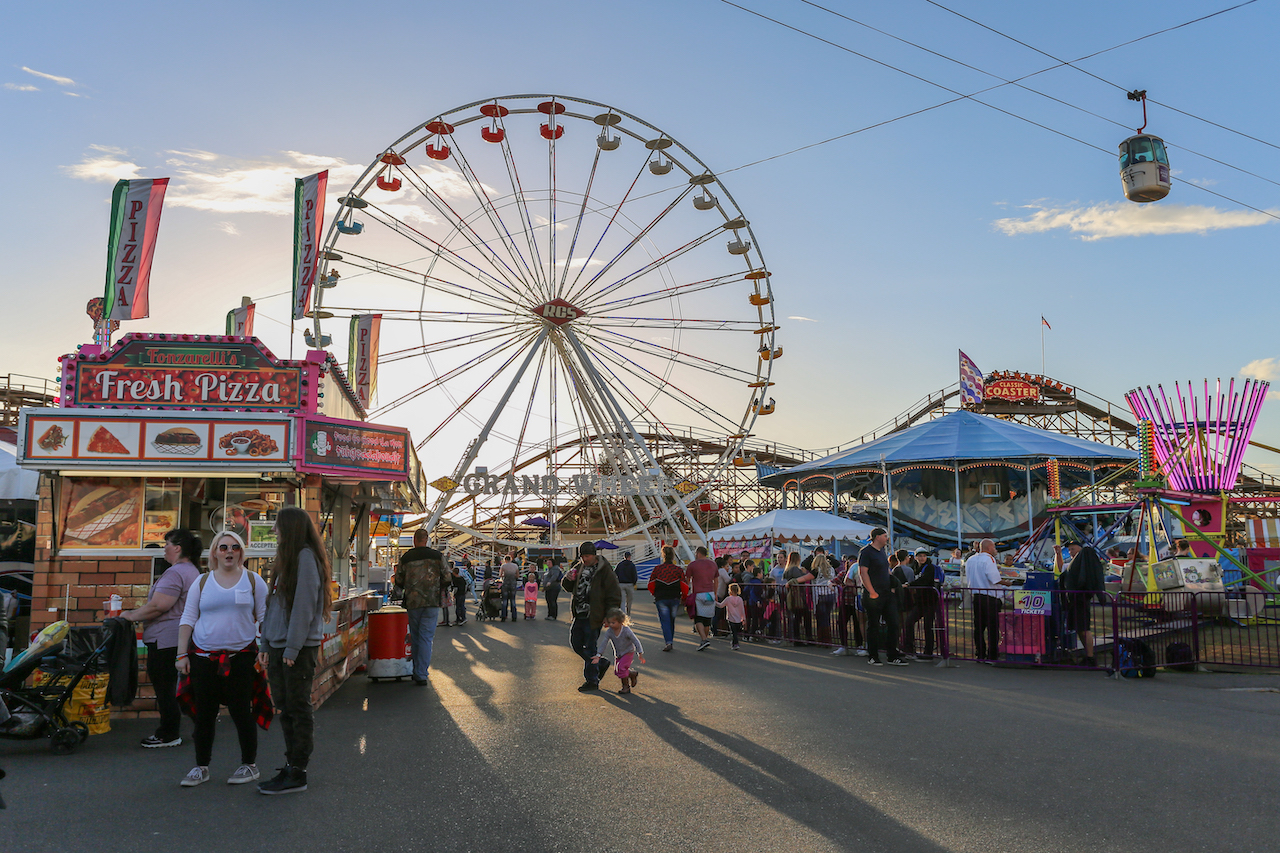Central Washington State Fair

The Washington State Fair, known as the Puyallup Fair to the locals, is the largest attraction held annually in Washington. It is also consistently ranked in the top ten for fairs in the United States, making it an excellent choice to visit if you’re in the area.
The Washington State Fair started back in the 1900’s when the Puyallup Valley community decided to join and create the “Valley Fair.” It was created in hopes of advancing the interest of agricultural, horticultural, dairying, stock raising, and mining industries of Puyallup.
The first dates of the first Valley Fair ran from October 4-6, 1900, and the fairground was located just west of where Pioneer Park is now located. Admission to the fair was $1 per family for all three days, equivalent to approximately $30 today. The first Valley Fair was such a hit that the second Valley Fair was extended one day longer than the first one and was situated on a larger 10-acre lot.
Here are some key historical events and interesting facts about the Washington State Fair that you may not have known:
- Parking lots were established in 1902 with the invention of the automobile. People were travelling from all over to come to the Fair. Parking a buggy or automobile cost 25 cents.
- Tacoma merchants offered their support to the Fair by closing their stores on Tacoma Day and the Puyallup Merchants Association also lent their support by closing their stores in the afternoons.
- In 1913, the “Valley Fair” was re-named The Western Washington Fair Association.
- After the war, the Fair became even more prosperous. By 1919, the Fair’s attendance was up to 75,000 people, and the Fair was held on 30 acres.
- In the ’20s, the main attractions for the seven-day show included: chariot racing, daredevil horse riding, 15 acres of exhibits, new horse stables, and racing horses.
- In 1922, attendance was at a record high of 130,000.
- Entertainment varied during this time. Native Americans who lived in tepees for the duration of the fair (as they also did in 1917) offered ponies for racing, presented war dances, and held parades.
- Many food concessions began in the ’20s.
- Earl Douglas brought in the first carousel in 1923 on a horse-drawn wagon base, steam powered and featuring a Wurlitzer band organ.
- By the mid-30’s, the rides were much more advanced than the carnivals in the past.
- Another key feature at the Fair in the ’30s was the Dance Hall which is now located on Grand Ave. and Premium Blvd.
- Attendance by the late ’30s was close to 400,000.
- Even though the Puyallup Fair survived the first World War, the Fair directors had no choice but to close the Fair during World War II.
- Shortly after the 1941 Fair, the federal government took over the Fairgrounds.
- During the month of May in 1943 the Fairgrounds became a relocation center for Japanese-Americans. The fairgrounds became the Puyallup Assembly Center, a temporary shelter for 7,390 Japanese-Americans.
- The first postwar Fair took place in September of 1946. People were eager to get out and enjoy themselves again in the family atmosphere that the Fair provided. As a result, the Fair set the record for a single day’s attendance at 100,000 people in 1946.
- The roller coaster ride was thirty-five cents.
- Because of the war recession, the Fair didn’t celebrate its 50th anniversary until 1953.
- A bigger Ferris wheel was added in 1955 standing 55′.
- Early Sunday morning on June 14, 1970, the Fair had its one and only fire. Many restaurants, the grandstand, part of the roller coaster, the Art and Floral Buildings, and some concessions were destroyed or damaged. The loss was estimated at $1.25 million and only $803,000 was covered by insurance.
- Horse racing at the Fair ended with the 1977 Fair.
- In 1978, the Fair was expanded from a 10-day fair to a 17-day fair. At this time, the Fair was occupying 46 acres.
- In attendance, the numbers fluctuated between 1.1 and 1.2 million until 1989 where it jumped to 1.3 million.
- The Fair grew into 125 acres of successful land.
- As a result of the attendance peak in 1991 (1,414,487), the Fair was the sixth largest fair in the United States.
- For the 1992 Fair, a $13+ million dollar Fairgrounds renovation project was completed in the south end of the facilities.
- In 1991, the Puyallup Fair was the first major fair in the United States to feature bungee jumping. 2,055 Fairgoers jumped from the crane at the Fair.
- Music great, Frank Sinatra was the opening day headliner on the 1993 grandstand stage. He sang to a sold-out crowd.
- The rides have become even more sophisticated. In 1999 the Extreme Scream thrill ride, a 20-story attraction was added.
- The decade finished with an attendance of 1,238,029, making it the fifth highest attended fair in the country.
- The Fair covers 160 acres.
- The Puyallup Fair celebrated it’s the 100th anniversary of its start, Sept 8-24. Over 1.3 million guests made the Fair a tradition during the centennial celebration.
- The new century marked the perfect time to celebrate 100 years since the Puyallup Fair first started. It was a celebration of the century, with 1,312,332 guests, our eighth highest attendance.
Visiting Washington
Today, the fair attracts more than a million patrons yearly and continues to bring in new attractions and fair events. If you’ve been thinking of visiting the great state of Washington, consider coming to one of the best fairs in the country! Contact me for more information on the Washington State Fair or the area in general. I would love to help answer any questions you may have.

 Facebook
Facebook
 X
X
 Pinterest
Pinterest
 Copy Link
Copy Link

